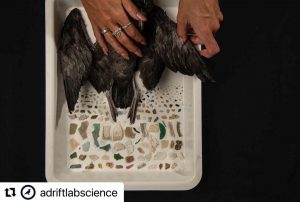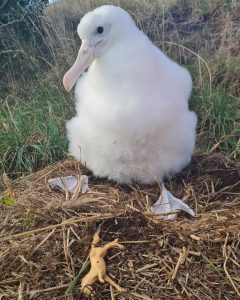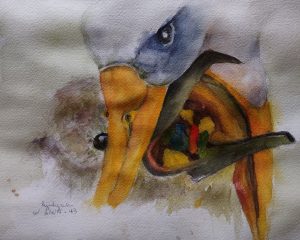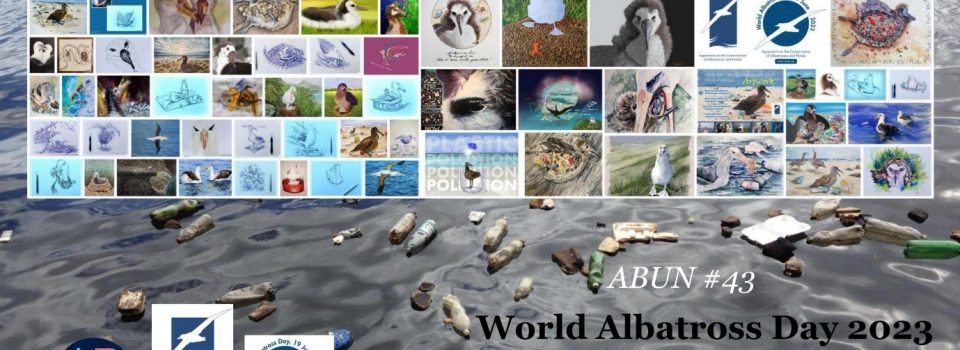June 19th World Albatross Day this year’s theme is “Plastic Pollution”
June 21st, 2023
Pieces of plastic, all taken from the stomach of a footed shearwater that failed to fledge, photo by Adrift Lab
The Albatrosses and Petrels Conservation Agreement (ACAP) has chosen the “Plastic Pollution” theme for the fourth World Albatross Day (WAD2023), which is celebrated on June 19th. The annual celebration takes place on the date the Agreement was signed in 2001. Its goal is to raise awareness of the ongoing conservation crisis facing the 31 species of albatrosses, petrels, and shearwaters covered by ACAP.

“Not My Little Pony.” A northern royal albatross chick at Pukekura/Taiaroa Head, New Zealand, avoids eating plastic.
In addition to the world’s 22 albatross species, other procellariiform (“tube-nosed”) seabirds are prone to ingesting bits of plastic they find floating on the sea surface and mistake for food. A notable example is the Patagonian Shearwater, which ingests large amounts of plastic at a breeding site, which has led to at least one new term, “plasticosis”, being coined to describe the damage caused. This species has previously been identified as a possible candidate for listing in ACAP.
Once again, the ACAP World Albatross Day logo was produced in the three official languages of the Agreement: English, French and Spanish, and also in Portuguese. In addition, this is the first year that the logo was also produced in Indonesian, Japanese, Korean, and Simplified and Traditional Chinese to signal the importance of the involvement of Asian high seas fishing fleets in the conservation of albatrosses, petrels, and shearwaters.

A Laysan albatross feeds its chick brightly colored pieces of plastic mistakenly ingested at sea. Artwork by ABUN artist Lyn Lynch, based on a photograph by Chris Jordan.
ACAP has collaborated for the fourth year with the Artists & Biologists Unite for Nature (ABUN) to produce 75 artworks by 31 participating artists depicting the effects of plastic pollution on the four albatross species featured for WAD2023. All of these works were combined with original music to produce a video for this year’s World Albatross Day; individual works are also available in an ACAP Facebook album. Six of these works by different ABUN artists were turned into posters in English, French, Portuguese and Spanish.
From photos donated to ACAP by supporters, twelve posters were produced representing the four featured albatross species in the nine language versions mentioned, available on the ACAP website here and in albums in each language on Facebook.
“While by-catch in fisheries and invasive species from breeding sites remain the biggest threats, the effects of the massive amounts of plastic debris in our oceans undoubtedly contribute to the conservation crisis they face. Albatross species: cause damage to the digestive tract and probably reduce foraging efficiency, leading to higher mortality rates in populations. The impacts of plastic waste are especially severe on North Pacific albatrosses, where nearly all chicks ingest plastics with the food provided by their parents. However, in the southern hemisphere, the amount of plastic debris is increasing and it is now common to detect plastic in the stomach of albatrosses washed up on the beach.”
Dr Mike Double, ACAP Advisory Committee Chairman, Senior Research Scientist, Australian Antarctic Program, Department of Climate Change, Energy, the Environment and Water.
ACAP Note and Photographs
